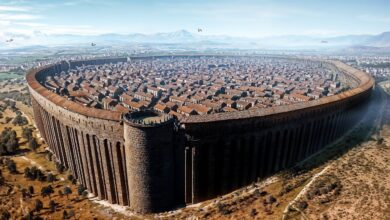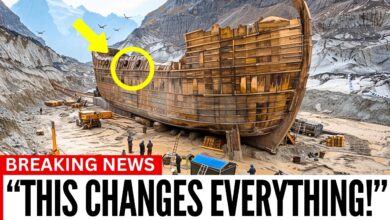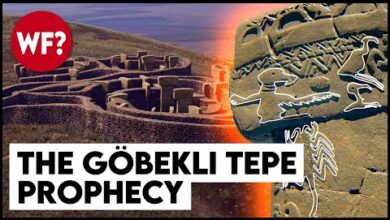Scientists Discovered A Lost Civilization Inside A Hollow Mountain That You Never Knew Existed

Lost civilizations, like the Indus Valley, were unknown until discoveries in the 1920s, challenging mainstream archaeology. Myths, often dismissed by archaeologists, can hold key insights into our lost history. In southwestern Turkey, the Lycian civilization is one such mystery. Known for its rock-cut tombs and unique architecture, the Lycian people carved tombs directly into cliffs and developed independently due to their isolated geography.
Charles Fellows, an English archaeologist, explored the region in the 19th century, documenting ruins and revealing a culture blending Greek and Persian influences. The Lycian tombs are notable for their detailed carvings and monumental structures, often seen as part of the landscape rather than hidden underground, as in Egypt’s Valley of the Kings.
One of the most fascinating sites is the ancient underground city of Derinkuyu in central Turkey, believed to have been built by the Phrygians. This city, extending 200 feet underground, was used for shelter, with advanced infrastructure like water wells and ventilation. It could house up to 20,000 people and was later used by early Christians. These findings challenge our understanding of ancient societies, showing their architectural sophistication and ability to adapt to environmental challenges.
The Kailasa Temple at Ellora Caves, carved from a single rock, is a marvel of ancient engineering and artistry, built in the 8th century under King Krishna of the Rashtrakuta dynasty. It has sparked debates about its construction, with some speculating about extraterrestrial influence or advanced ancient technology. The temple, part of a larger complex of caves in Maharashtra, India, showcases a blend of Buddhist, Hindu, and Jain heritage. Cave 16, the Kailasa Temple, is the largest monolithic rock excavation in the world, requiring precise planning and labor.
The caves, initially lost to history, were rediscovered in 1819 by British officer Captain John Smith during an expedition. This led to renewed interest and systematic archaeological efforts, particularly by James Burgess and Gulam Yazdani. The Kailasa Temple, with its intricate carvings, multi-story design, and alignment with celestial bodies, continues to inspire awe and scholarly debate about the advanced techniques used in its creation.
Although theories about extraterrestrial influence or secret chambers circulate, most scholars attribute the temple’s construction to human ingenuity. The temple’s preservation is vital, as it serves as a gateway to understanding ancient Indian civilization, with ongoing efforts to protect it as a UNESCO World Heritage site.
The Allora caves showcase diverse art and iconography, each cave telling a story of spiritual significance. The Buddhist caves, such as Cave 10, feature sculptures and architectural designs narrating Buddha’s life and teachings, including a large stupa and a towering Buddha statue.
The Hindu caves, notably Cave 16, the Kyasa Temple, are filled with intricate depictions of gods and goddesses, and feature stories from the Ramayana and Mahabharata. The Jain caves, especially Cave 32 (Indra Sabha), reflect Jainism’s focus on tranquility and enlightenment through detailed carvings.
In contrast, the Ajanta caves are primarily Buddhist and emphasize storytelling through wall paintings and sculptures. Unlike the varied architecture of Allora, Ajanta’s caves are more uniform in design. Allora’s diversity also illustrates the evolution of rock-cut architecture, from simple monasteries to elaborate temples.
Mohenjo-daro, a key site of the Indus Valley Civilization, was discovered in 1922 and offers a glimpse into one of the world’s earliest urban societies, with advanced urban planning, including sophisticated drainage systems and public baths. Excavations from the 1920s through the 1960s revealed an organized city with homes, granaries, and baths.
Known for its Great Bath, Mohenjo-daro showcases advanced water management and urban design. Artifacts like the Dancing Girl and Priest King statue highlight the city’s craftsmanship and social structure. The city’s layout and drainage systems indicate a well-organized society, and it was declared a UNESCO World Heritage Site in 1980. Comparisons with ancient Egypt show Mohenjo-daro’s focus on functional urban landscapes rather than monumental structures.
Masada, an ancient fortification overlooking the Dead Sea in Israel, is a symbol of Jewish heroism. Built by Herod the Great, it became a last stronghold for Jewish rebels during the First Jewish-Roman War, and its dramatic history has been confirmed through excavations. The discovery of the Dead Sea Scrolls nearby adds to the mystery of the region.








